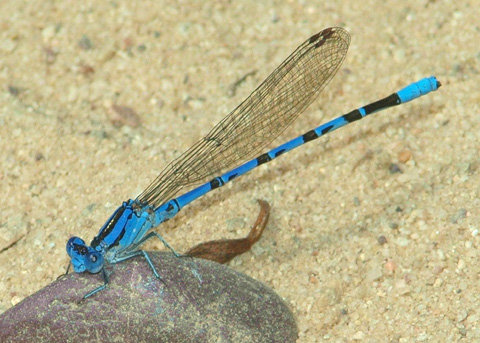 Male. Peter's Canyon, Orange, Orange County, CA. 6-5-06. © Peter J. Bryant |
Vivid Dancer
Argia vivida Odonata: Coenagrionidae Back to Odonata index page |
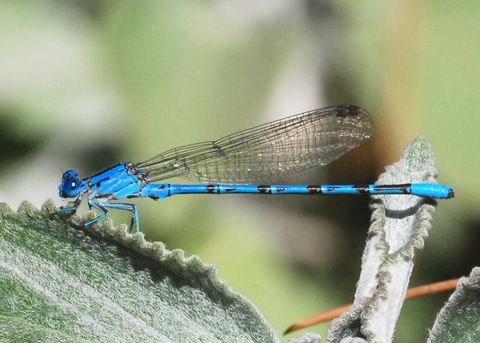 Male. Fullerton Arboretum, Fullerton, Orange County, CA. 11-15-09. © Ron Hemberger |
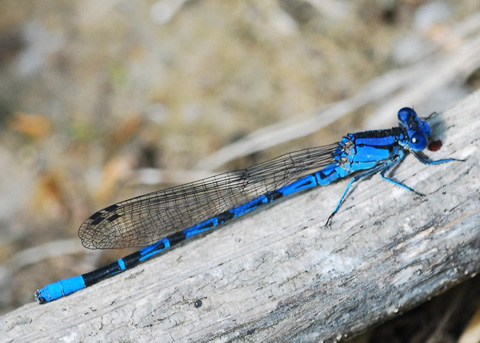 Male. Irvine Regional Park, Orange, Orange County, CA. 3-30-10. © Ron Hemberger |
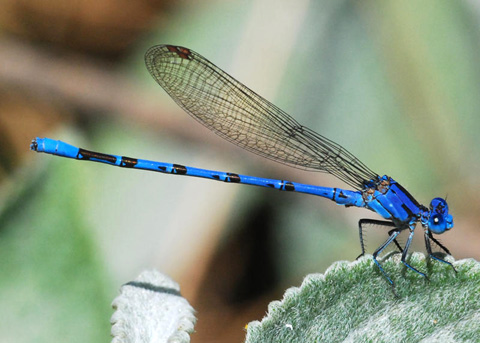 Male. Fullerton Arboretum, Fullerton, Orange County, CA. 4-24-10. © Ron Hemberger |
 Male. Irvine Regional Park, Orange, Orange County, CA. 7-18-06. © Ron Hemberger |
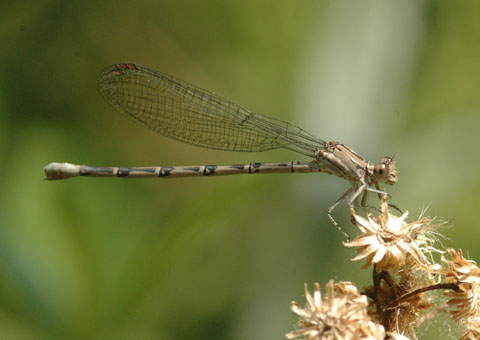 Female. Irvine Regional Park, Orange, Orange County, CA. 7-14-06. © Ron Hemberger |
 Female. Fullerton Arboretum, Fullerton, Orange County, CA. 4-24-10. © Ron Hemberger |
 Female. Peters Canyon Regional Park, Orange, Orange County, CA. 8-1-13. © Ron Hemberger |
|
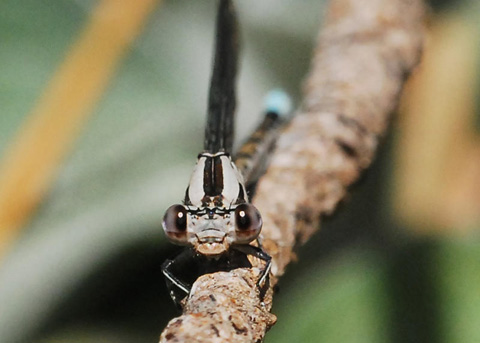 Female. Fullerton Arboretum, Fullerton, Orange County, CA. 4-24-10. © Ron Hemberger |
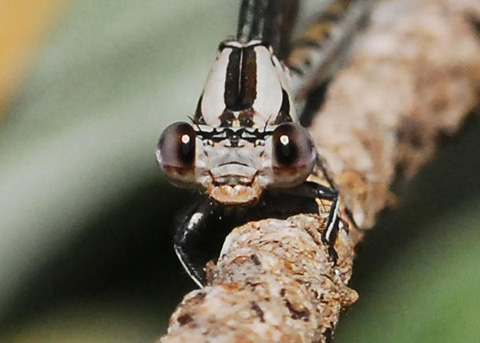 Female. Fullerton Arboretum, Fullerton, Orange County, CA. 4-24-10. © Ron Hemberger |
Male, immature. Mason Park, Irvine, Orange County, CA. 07/29/07. © Ron Hemberger |
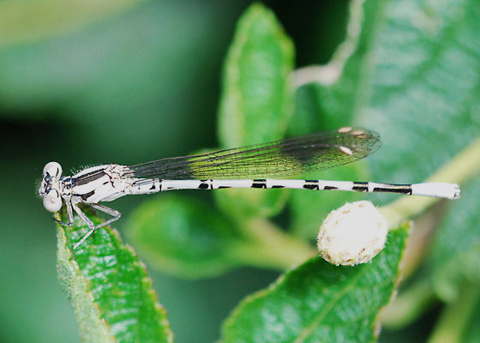 Male, immature. Fullerton Arboretum, Fullerton, Orange County, CA. 3/5/10. © Ron Hemberger |
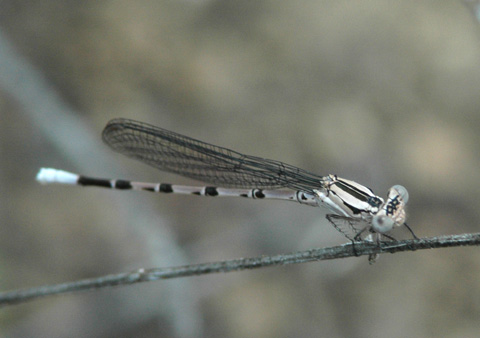 Male, immature. Irvine Park, Orange, Orange County, CA. 5-26-06© Ron Hemberger |
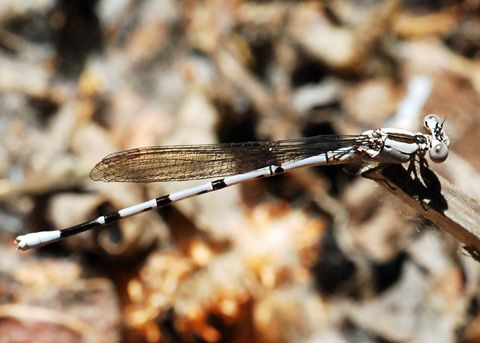 Male, immature. Big Canyon, Newport Beach, Orange County, CA. 5-6-09. © Ron Hemberger |
|
|
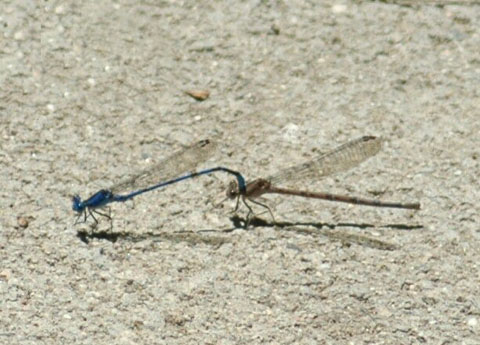 Coupling. San Joaquin Freshwater Marsh, Irvine, Orange County, CA. 8-22-05. © Ron Hemberger |
 Coupling. Fullerton Arboretum, Fullerton, Orange County, CA. 10-8-06. © Ron Hemberger. |
| In most insects after sperm transfer, the female stores sperm for a long time, possibly her whole life, and uses it as needed. This is sometimes, as in damselflies, associated with guarding behavior - after mating, the male will guard the female in order to prevent other males from displacing his sperm. So you often see them flying around coupled, for much longer than it takes to transfer the sperm. | |
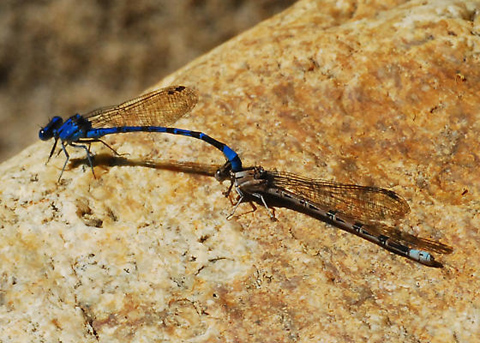 Coupling. Rancho Santa Ana Botanic Garden, Claremont, Los Angeles County, CA. 5/2/10. © Ron Hemberger. |
 Coupling, almost mating pair. Rancho Santa Ana Botanic Garden, Claremont, Los Angeles County, CA. 5/2/10. © Ron Hemberger. |
| In damselflies and dragonflies, the male has a set of secondary sexual organs on the second abdominal segment as well as his primary genital opening at the end of the abdomen. Before mating occurs the male charges his secondary apparatus with sperm from his primary genital opening. Mating begins with the male grasping the female around the neck with his claspers at the end of his abdomen. The female then brings her abdomen forward to engage the male's secondary copulatory apparatus and allow sperm transfer. | |
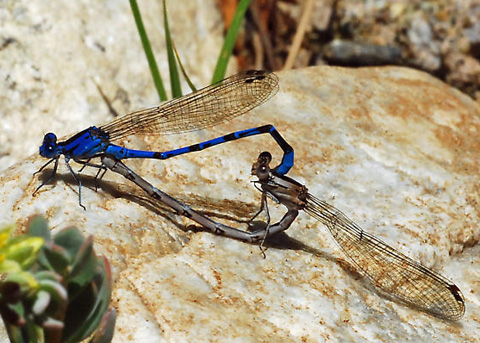 Mating pair in the "wheel" configuration. Rancho Santa Ana Botanic Garden, Claremont, Los Angeles County, CA. 5/2/10. © Ron Hemberger. |
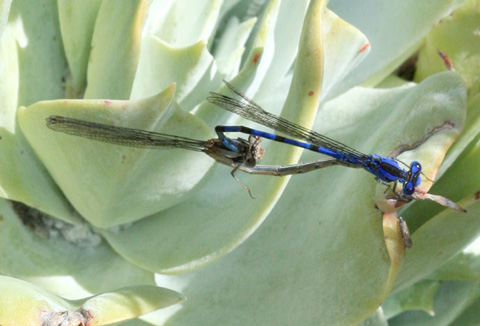 Mating pair. Oak Canyon Nature Center, Anaheim Hills, Orange County, CA. 4/23/10. © Joan Hampton. |
| Teneral stages | |
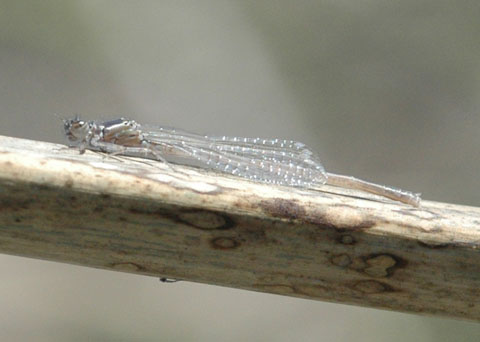 Teneral. San Joaquin Freshwater Marsh, Irvine, Orange County, CA. 3-16-06. © Ron Hemberger |
Teneral. Fullerton, Orange County, CA. 10-14-06. © Ron Hemberger |
Teneral. Fullerton, Orange County, CA. 10-14-06. © Ron Hemberger |
Teneral. Fullerton, Orange County, CA. 10-14-06. © Ron Hemberger |
 |
Damselflies have several different appearances as they mature. When they first emerge from the nymph stage, they are called tenerals and can be almost transparent (like the one shown above). With their wings not yet fully formed, they fly awkwardly to a nearby perch and rapidly begin to mature. The two photos on the left show how, in a period of just six minutes, blood has flowed into veins in the wings, thus turning the once-floppy appendages into more solid structures. The body color also darkens and becomes more vivid, particularly in older tenerals. Adult coloration is darker yet, then, as the damselflies continue to age, their colors begin to fade into softer, more subtle hues (the same is true with dragonflies). |
| Below this line: nymphs (larvae) identified only to family: | |
 Silverado Canyon, Orange County, CA. 04/84. © Peter J. Bryant |
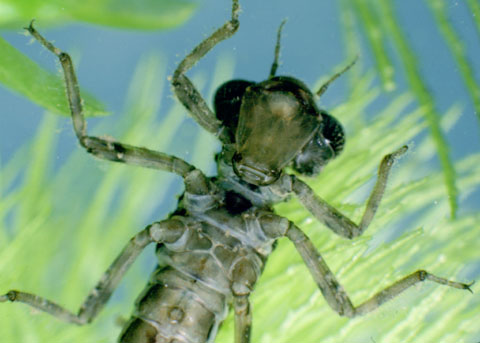 Silverado Canyon, Orange County, CA. 04/84. © Peter J. Bryant |
 Oak Canyon Nature Center, Anaheim, Orange County, CA. 7-19-10. © Ron Hemberger |
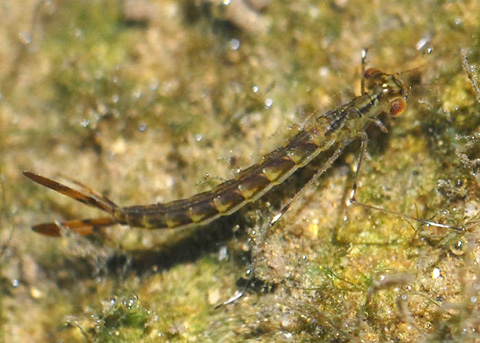 Oak Canyon Nature Center, Anaheim, Orange County, CA. 7-19-10. © Ron Hemberger |
 Oak Canyon Nature Center, Anaheim, Orange County, CA. 7-19-10. © Ron Hemberger |
|
